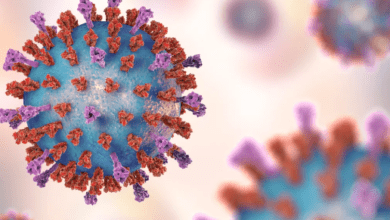Unraveling the Impact of the New COVID-19 JN.1 Variant Causing a Surge in Cases

The Emergence of JN.1: A Culprit Behind the Spike
In a concerning turn of events, a new strain of COVID-19, identified as JN.1, has surfaced, leading to an alarming increase in cases and hospitalizations. Victoria anticipates a relentless “wave-on-wave” of infections attributed to this novel variant, while New South Wales grapples with the highest levels of COVID-19 in over a year, as confirmed by NSW Health.
Unveiling JN.1: An Evolution from BA.2.86
JN.1 traces its origin back to BA.2.86, also known as Pirola, a subvariant that gained global attention during the summer due to significant alterations in its spike proteins, exceeding 30 changes. Initially feared for its potential to evade vaccine and antibody protections, similar to the original Omicron variant in 2021, BA.2.86 did not cause the anticipated widespread illness. Instead, it persisted, evolving into the current JN.1 variant.
Assessing the Threat Level
Addressing concerns about JN.1, the World Health Organization (WHO) categorizes the public health risk as “low.” Despite this, the WHO acknowledges the possibility of an “increase” in cases associated with this variant. Limited data, however, suggests no elevated risk of hospitalization compared to other strains.
Signs and Symptoms of JN.1
The U.S. Centers for Disease Control notes that distinguishing symptoms specific to JN.1 is yet unknown. Common COVID-19 symptoms, such as sore throat, cough, fever, congestion, runny nose, fatigue, and muscle aches, prevail with this variant.
Hammes Completes Jackson Medical Plaza in McAllen, Texas – HCD Magazine
COVID-19 Landscape in Australia
Amidst the surge, both New South Wales and Victoria report a rise in COVID-19 cases, accompanied by a notable increase in ICU admissions, as indicated by national data. The JN.1 variant plays a significant role in this surge, constituting 35% of infections in New South Wales, along with the EG.5 variant contributing to 40% of cases.
Regional Impact: Victoria’s Double COVID-19 Wave
In Victoria, the rapid spread of the JN.1 variant triggers a dual COVID-19 wave, resulting in the highest number of hospitalizations within a six-month period. The latest surveillance report from Victoria’s Department of Health reveals a surge in hospitalizations, with an average of 377 individuals hospitalized, surpassing the early December peak of 326 cases.
Heightened Concerns in New South Wales
New South Wales grapples with more than 17% of PCR tests returning positive results, signaling the state’s “highest level of COVID-19” in the community in a year. The JN.1 variant, accounting for 35% of infections, and the EG.5 variant, responsible for 40% of cases, contribute significantly to the surge, according to NSW Health.
Wider Impact: South Australia
Beyond the eastern states, South Australia witnesses an uptick in cases over recent weeks, indicating a broader regional impact of the evolving COVID-19 landscape.
As the situation unfolds, health authorities closely monitor the impact of the JN.1 variant, emphasizing the need for heightened vigilance and adherence to public health measures to curb the spread of the virus.




